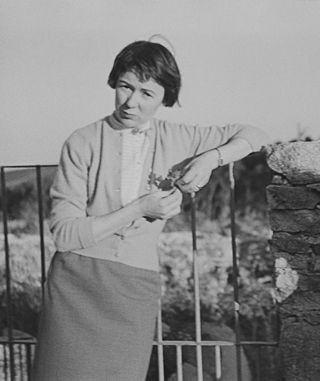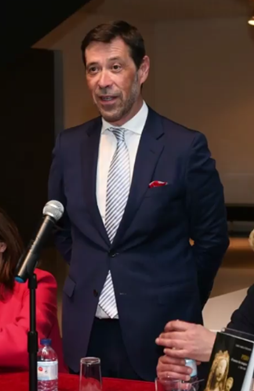
The Tapoli or Tapori were an ancient Celtic tribe of Lusitania, akin to the Lusitanians, to whom they were a dependent tribe, living just north of the river Tagus, around the border area of modern-day Portugal and Spain.

The Tapoli or Tapori were an ancient Celtic tribe of Lusitania, akin to the Lusitanians, to whom they were a dependent tribe, living just north of the river Tagus, around the border area of modern-day Portugal and Spain.
Endovelicus is the best known of the pre-Roman Lusitanian and Celtiberian gods of the Iron Age. He was originally a chthonic god. He was the God/Lord of the Underworld and of health, prophecy and the earth, associated with vegetation and the afterlife. Later accepted by the Romans themselves, who assimilated it to Pluto or to Serapis and made him a relatively popular god.

Francisco Caetano Keil Coelho do Amaral, 2nd Viscount of Pedralva, was a Portuguese architect, painter and photographer. His name was given to a street in Lisbon.
The Lusitanians were an Indo-European speaking pre-Celtic people living in the far west of the Iberian Peninsula, corresponding roughly to Central Portugal and some areas of modern-day Extremadura and Castilla y Leon, in Spain. After its conquest by the Roman Republic the land was subsequently incorporated as a Roman province named after them (Lusitania).

The Celtici were a Celtic tribe or group of tribes of the Iberian peninsula, inhabiting three definite areas: in what today are the regions of Alentejo and the Algarve in Portugal; in the Province of Badajoz and north of Province of Huelva in Spain, in the ancient Baeturia; and along the coastal areas of Galicia. Classical authors give various accounts of the Celtici's relationships with the Gallaeci, Celtiberians and Turdetani.

The Coelerni were an ancient Celtic tribe of Gallaecia in Hispania, part of Calaician or Gallaeci people, living in what was to become the Roman Province of Hispania Tarraconensis, in what is now the southern part of the province of Ourense.

The Paesuri or Paesures were an ancient pre-Roman Tribe of Lusitania, akin to the Lusitani, to whom they were a dependent tribe.

The Turduli or Turtuli were an ancient pre-Roman people of the southwestern Iberian Peninsula.

The Turduli Veteres, translated as "Ancient Turduli" or "Old Turduli" were an ancient pre-Roman tribe of present day Portugal, akin to the Calaicians or Gallaeci and Lusitanians.

The Turduli Oppidani or Turdulorum Oppida, were a pre-Roman coastal people in present-day Portugal, related to the Turduli Veteres and akin to the Lusitanians.

Conímbriga is one of the largest Roman settlements excavated in Portugal, and was classified as a National Monument in 1910. Located in the civil parish of Condeixa-a-Velha e Condeixa-a-Nova, in the municipality of Condeixa-a-Nova, it is situated 2 kilometres (1.2 mi) from the municipal seat and 16 kilometres (9.9 mi) from Coimbra.

The Machado de Castro National Museum is an art museum in Coimbra, Portugal, named after the renowned Portuguese sculptor Joaquim Machado de Castro. It first opened in 1913 and its latest renovation (2004–2012), which included the addition of a new building, was awarded the Piranesi/Prix de Rome Prize 2014.

The Carpetani were one of the Celtic pre-Roman peoples of the Iberian Peninsula, akin to the Celtiberians, dwelling in the central part of the meseta - the high central upland plain of the Iberian Peninsula.

The National Museum of Archaeology is the largest archaeological museum in Portugal and one of the most important museums devoted to ancient art found in the Iberian Peninsula. Located in Lisbon, the museum was founded in 1893 by the archaeologist José Leite de Vasconcelos. The museum is located in the western wing of the Jeronimos Monastery where the monks had their dormitory. The museum is built in the Neo-Manueline style and was officially opened in 1906.

Balsa was a Roman coastal town in the province of Lusitania, Conventus Pacensis.

The Bardili were a small, pre-Roman tribe of the Iberian Peninsula, and an offshoot of the widespread Turduli people, who lived in what is now southwestern Portugal in the 5th-1st centuries BC.

Maria Keil was a Portuguese visual artist. She was born in Silves and died in Lisbon.

António Joaquim Tavares Ferro was a Portuguese writer, journalist and politician, associated with the Estado Novo.
The Villa Lusitano-Romana de Torre de Palma, sometimes Villa Cardillio or Vila Cardílio is a Roman villa near Monforte in Portugal, which was in Roman times part of the province of Lusitania. It is considered one of the largest in the Iberian Peninsula. The prosperity of these latifundia in the region is often evidenced by shrines in the courtyard. In addition to the extensive living areas, a basilica and a seven-roomed baptistery have been uncovered in Torre de Palma.
Maria Lúcia Amaral is a Portuguese lawyer, university professor, politician and judge. She was vice-president of the Constitutional Court of Portugal and is Portugal's 10th Ombudsman, being the first woman to hold this post.

António Manuel Filipe Rocha Pimentel is a Portuguese academic and art historian currently the director of the Calouste Gulbenkian Museum in Lisbon, Portugal.